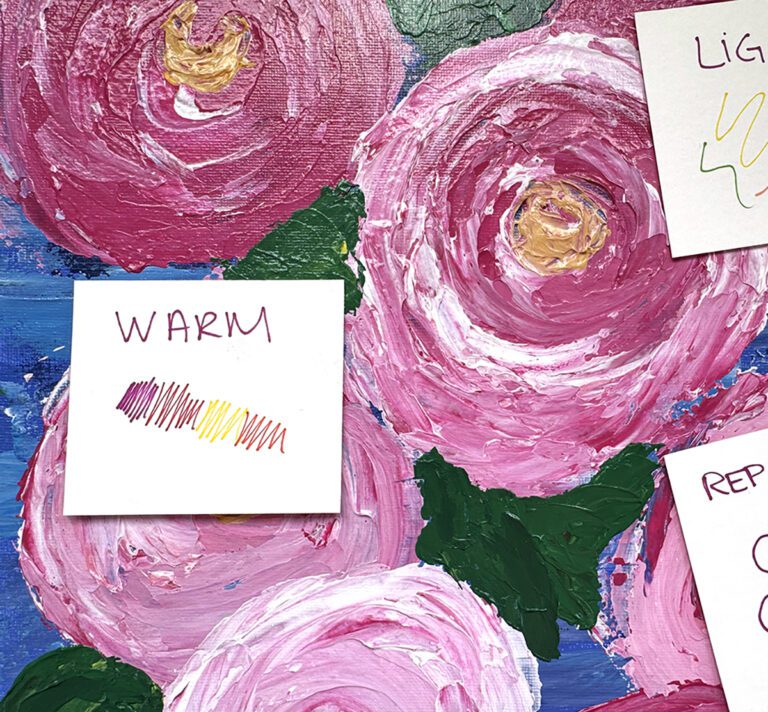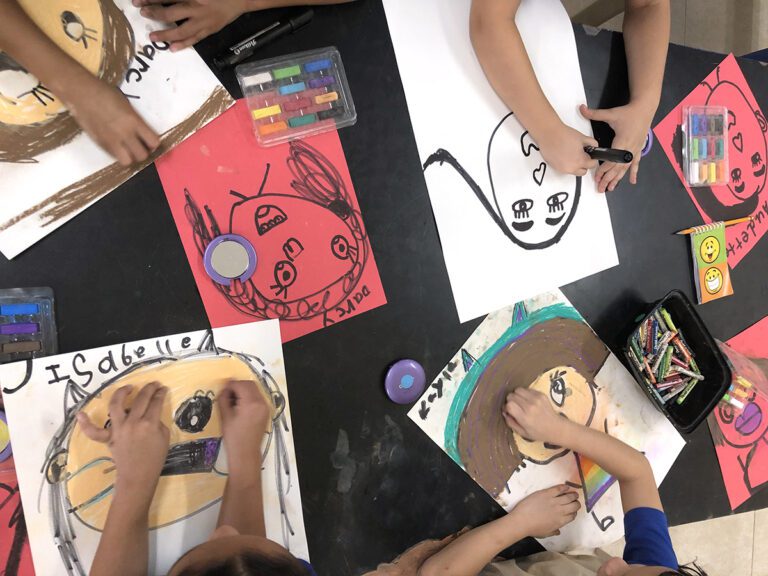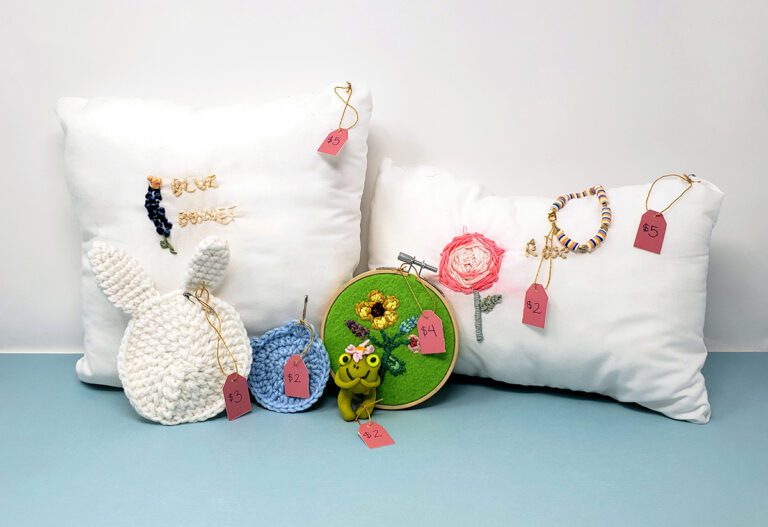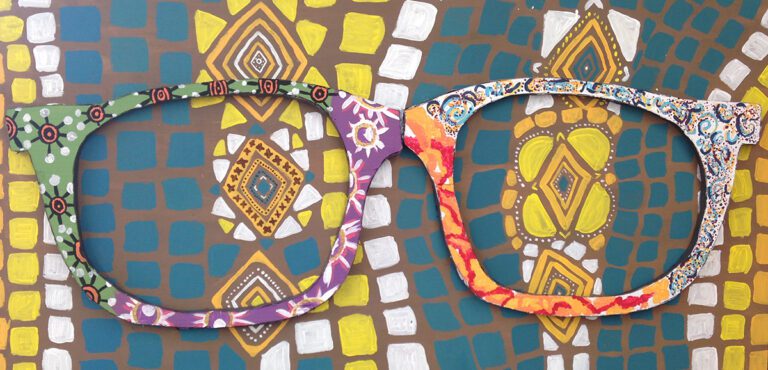Giving students feedback is important, but it can also be time-consuming. Plus, sometimes students don’t even glance at your feedback before it goes in the trash. What gives?
Let’s explore 5 helpful ways to give feedback to save you time, sanity, and get students involved.
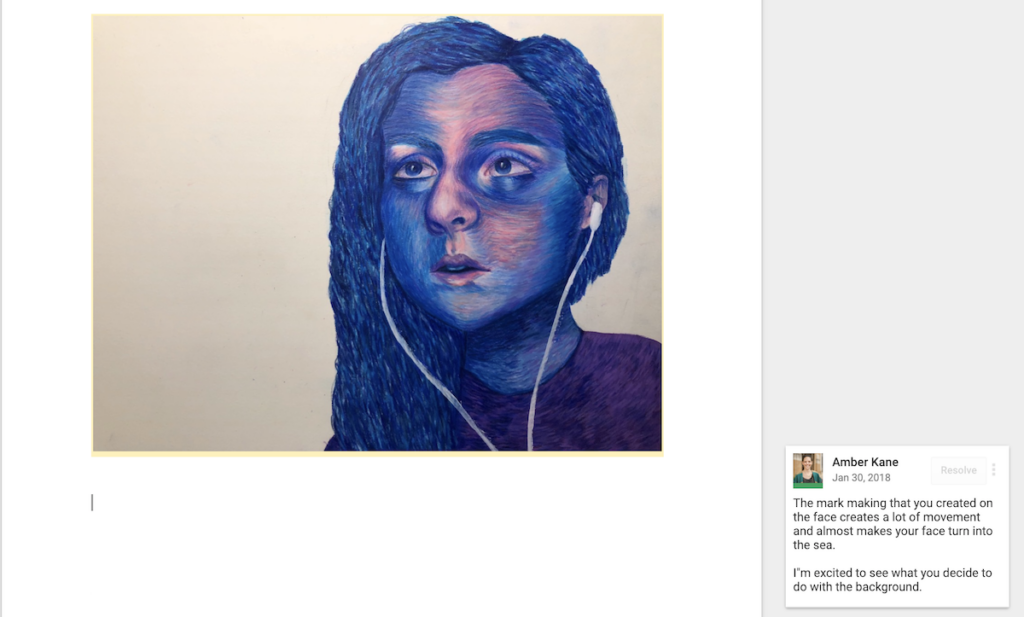
1. Be Specific
It’s easy to feel like you need to comment on everything about a piece. However, that takes a lot of time and can be overwhelming for both you and the students. Instead, be specific and talk about what matters most.
When students submit their work, have them respond to the question, “What is one specific thing on which you want feedback?” This question pushes students to reflect on their work and areas of weakness. It also directs your feedback, making students more likely to be interested since it’s addressing a specific issue.
As with most things, when you first implement this strategy, you may find students have trouble responding. When getting started, you’ll likely see questions like the following: “Do you like the colors I used?” Or, “What would make it better?”
Work with students to develop more thoughtful and specific questions. Ask them, “Why are you unsure about the colors?” Or, “What makes you think your piece needs improvement?” Next, turn those thoughts into a question.
In the first case, if the student came back and said they weren’t sure if their color choices were invoking a specific mood, their question for you becomes, “How do you feel the colors in my piece affect the overall mood?”
You might be thinking this seems difficult. In the beginning, it can be. Remember, you’re teaching students how to find problems, an essential creative thinking skill.
2. Ask Questions
A great way to provide students with helpful feedback that also keeps them motivated is to tap into their interests. When students submit their work, ask them to share something they wish they knew more about. Then either provide them with resources, incorporate the request into future lessons, or review the process with them.
For example, a student might say, “I wish I knew more about blending with watercolors.” Or, “I wish that I knew more about proper proportions when it comes to drawing the human figure.” You can link them to resources you’ve created or share a helpful video from YouTube.
Student responses to this question often help point out areas where they feel they are weak. By allowing the students to ask the question, they’re more open to feedback. It’s no longer about what they did wrong; it’s now about what they want to learn.
Or, let’s say you have a student who states they wished they knew how to create a more interesting composition. Again, you can provide them with links and/or leave some comments like, “Your composition could be more dynamic by moving the subject out of the center. You could also consider using repetition to help move the eye around the page. For your next piece, challenge yourself to move your subject out of the center.” This type of feedback encourages growth and helps students to see how they can apply feedback moving forward.
If you use rubrics, include a section asking students to reflect on how they applied previous feedback to their current work.
3. Practice Peer Feedback
Verbal class critiques are great for students to learn from their peers. It also gives them practice talking about art. Written critiques are also important to practice, and can cut down on your feedback time.
I have my students submit assignments in a Google Doc. They start by photographing their work and inserting the image. Next, they complete reflection questions along with the rubric.
Using the TAG method, classmates open each other’s Google Docs and leave comments inside. When I open the document to grade, I read over classmates’ feedback and insert additional comments or notes. This is much faster than starting from a blank slate. You can find even more peer feedback strategies in the Peer Feedback Strategies PRO Learning Pack.
This is another good opportunity to provide additional resources. For example, let’s say a classmate leaves a comment sharing they feel the perspective is off. As the teacher, you can include further instructions or links to help.
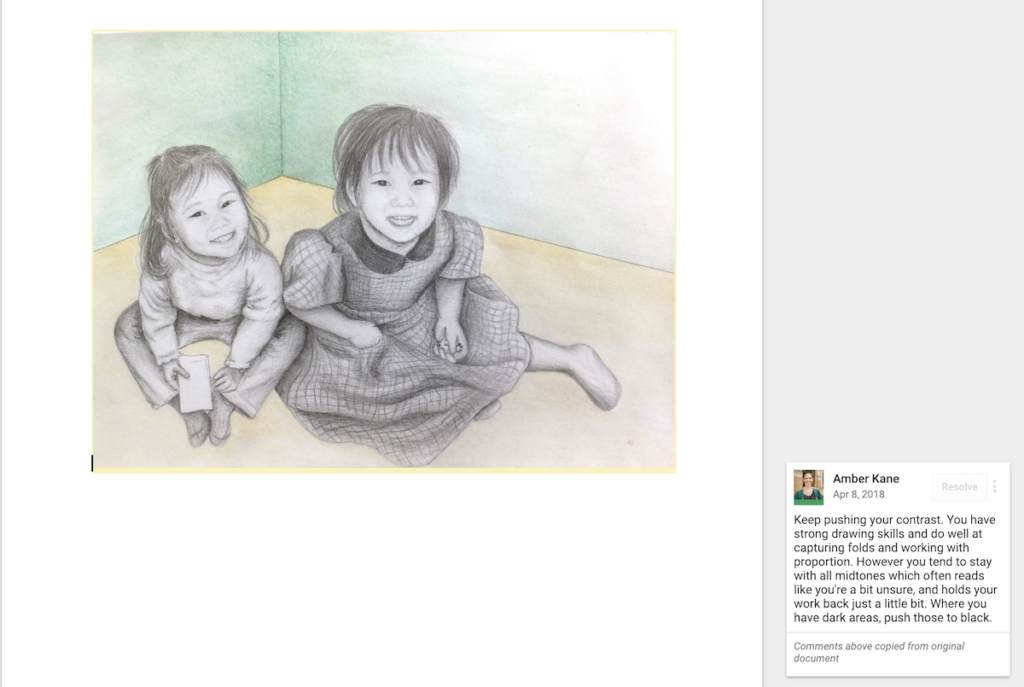
4. Use Video
If you have students submit work digitally, consider giving them feedback by recording your screen. As you record the screen, talk about their work. Save the recording and provide the student with the link.
Providing audio feedback can make it more personal. It also allows students to hear your inflection. Hearing your voice helps avoid students misunderstanding the information as overly negative.
It’s often easier and faster to get the point across by talking about the work then trying to write out why a work of art is receiving a specific grade.
I like to use a program called Vidgrid; it allows me to see when students have watched the video. It also allows me to include quiz or survey questions if needed. If you’re looking for a free tool, Soapbox or QuickTime Player also work well.
5. Make it a conversation
As teachers, we get frustrated with the amount of time we spend grading and providing feedback. It seems like students don’t take the time to read it, let alone reflect and apply it to future work. But when feedback becomes a conversation, it has meaning and fosters learning.
One way we can make feedback more of a conversation is by putting most of our efforts into progress critiques. After a progress critique, have students either note on the back of their work or in their sketchbook one to three helpful ideas. They should also write some notes about how they want to apply those ideas.
If you do written progress critiques, have students circle the ideas they liked the most.
Another way to make feedback more of a conversation is to use the comment feature within Google Drive. This allows you to respond to students and they can respond back. You’ll get an email when a student responds to you, making it easy to pop back in and keep the conversation going.
Feedback is important and helpful only if students take the time to process and apply it. Leaving feedback simply for the sake of doing so is a waste of time. Make sure to use feedback to encourage and teach students how to learn from it and apply it to future work.
What is your biggest frustration when it comes to giving students feedback?
What is one idea from above you plan to try in your classroom this month?
Magazine articles and podcasts are opinions of professional education contributors and do not necessarily represent the position of the Art of Education University (AOEU) or its academic offerings. Contributors use terms in the way they are most often talked about in the scope of their educational experiences.


